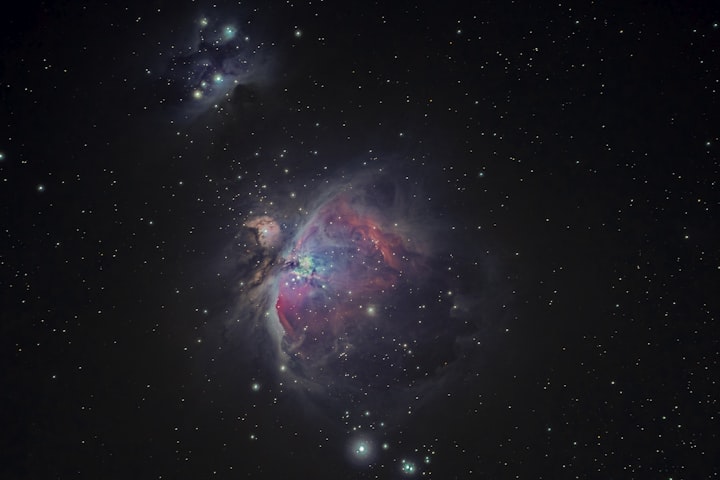NGC 6872: THE LARGEST SPIRAL GALAXY
NGC 6872 exhibits a classic spiral galaxy structure, composed of a bright, dense core surrounded by sprawling spiral arms. These arms are populated with billions of stars, gas clouds, and dust. The spiral pattern emerges due to the gravitational forces acting on the matter within the galaxy, creating the stunning arms that wind outwards from the core.

NGC 6872 exhibits a classic spiral galaxy structure, composed of a bright, dense core surrounded by sprawling spiral arms. These arms are populated with billions of stars, gas clouds, and dust. The spiral pattern emerges due to the gravitational forces acting on the matter within the galaxy, creating the stunning arms that wind outwards from the core.
Introduction:
NGC 6872, also known as the Condor Galaxy, stands as an awe-inspiring celestial wonder within the vast cosmos. It is considered the largest known spiral galaxy, captivating astronomers and stargazers alike with its sheer size and majestic beauty. Situated approximately 212 million light-years away in the southern constellation of Pavo, this colossal cosmic structure has intrigued scientists since its discovery. In this article, we will delve into the intriguing characteristics, formation, and significance of NGC 6872.
Observing NGC 6872:
Measuring an astonishing 522,000 light-years from one end to the other, NGC 6872 dwarfs our own Milky Way galaxy, which spans a mere 100,000 light-years. Its spiral arms stretch far and wide, weaving a mesmerizing dance of stars and cosmic dust. To observe this massive galaxy, advanced telescopes, such as the Hubble Space Telescope, play a pivotal role in capturing its grandeur and intricacies.
Structure and Spiral Arms:
NGC 6872 exhibits a classic spiral galaxy structure, composed of a bright, dense core surrounded by sprawling spiral arms. These arms are populated with billions of stars, gas clouds, and dust. The spiral pattern emerges due to the gravitational forces acting on the matter within the galaxy, creating the stunning arms that wind outwards from the core.
Interaction with IC 4970:
NGC 6872's captivating appearance is further enhanced by its interaction with another nearby galaxy, IC 4970. The two galaxies are gravitationally bound and engaged in a slow and delicate dance, known as a galactic interaction. This interaction has resulted in tidal forces that have pulled out the spiral arms of NGC 6872, creating extended structures that appear wispy and connected to the companion galaxy.
Star Formation and Nebulae:
Within the vast expanse of NGC 6872, regions of intense star formation, known as nebulae, dot the landscape. These nebulae are areas where interstellar gas and dust have collapsed under gravity, giving birth to new stars. Their luminosity contributes to the overall splendor of this cosmic giant.
Insights into Galactic Evolution:
Studying galaxies like NGC 6872 provides astronomers with essential insights into the evolution of cosmic structures over time. The interactions and mergers of galaxies are crucial processes that shape the universe as we know it. The intricate dynamics at play in NGC 6872 offer a glimpse into the early stages of galaxy formation and the forces that govern their growth.
Role of Supermassive Black Holes:
Like many other massive galaxies, NGC 6872 is believed to harbor a supermassive black hole at its core. These enigmatic objects have a profound impact on the evolution of galaxies, influencing star formation, and shaping their overall structure. Understanding the role of black holes in galaxies like NGC 6872 is crucial to comprehending the larger cosmic ecosystem.
Exploration Challenges and Future Endeavors:
Studying NGC 6872 and other distant galaxies comes with its share of challenges. The vast distances and timescales involved necessitate advanced telescopes, technology, and international collaborations. As we look to the future, more powerful observatories, such as the James Webb Space Telescope, will undoubtedly shed new light on the mysteries of NGC 6872.
Conclusion:
NGC 6872 stands as a celestial masterpiece, captivating our imagination and pushing the boundaries of our understanding of the universe. As we continue to explore and analyze this largest spiral galaxy, we unlock the secrets of galactic evolution and our place in the cosmos. The study of NGC 6872 serves as a testament to humanity's insatiable curiosity and quest to comprehend the vast cosmic wonders that lie beyond.





Comments
There are no comments for this story
Be the first to respond and start the conversation.